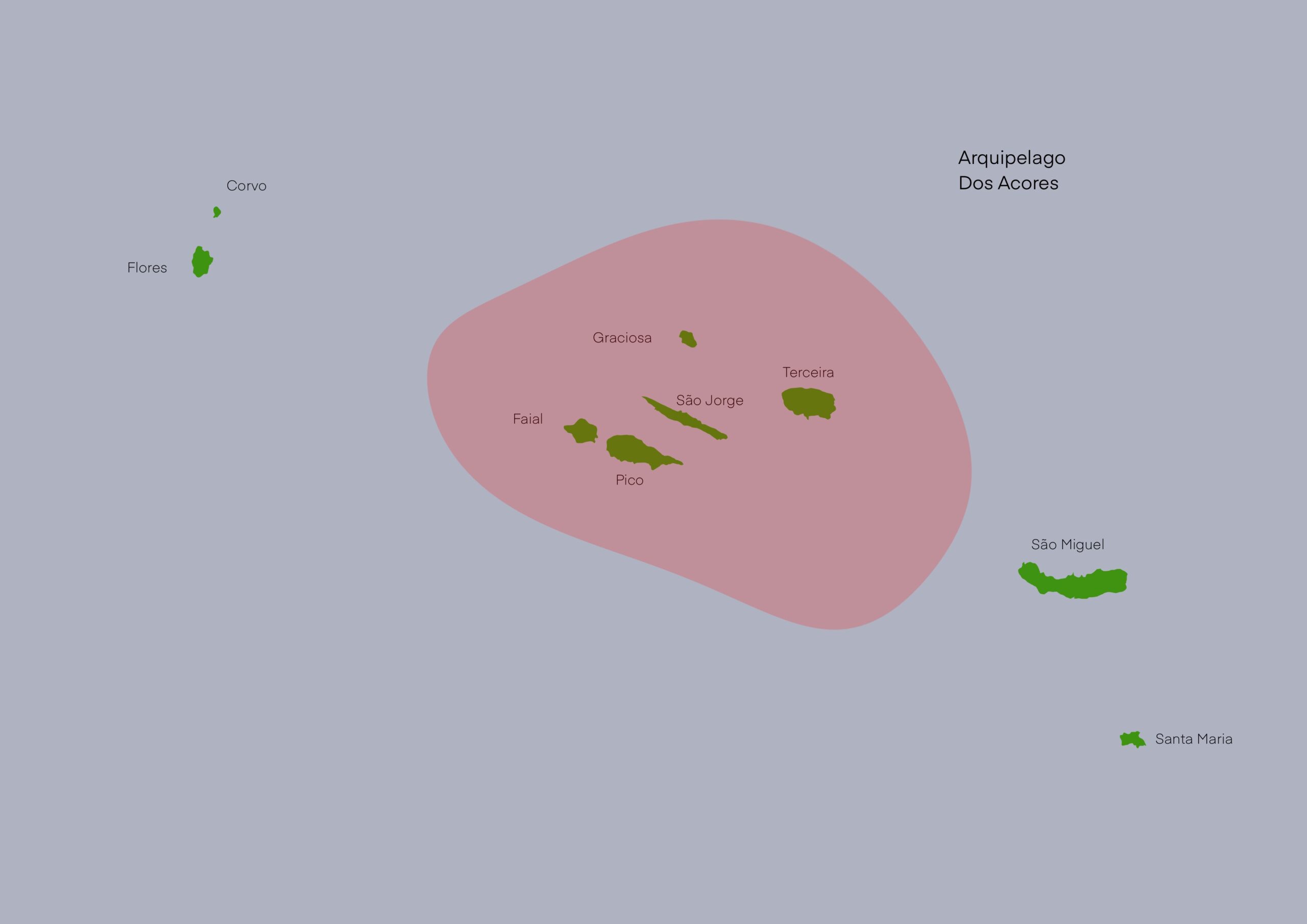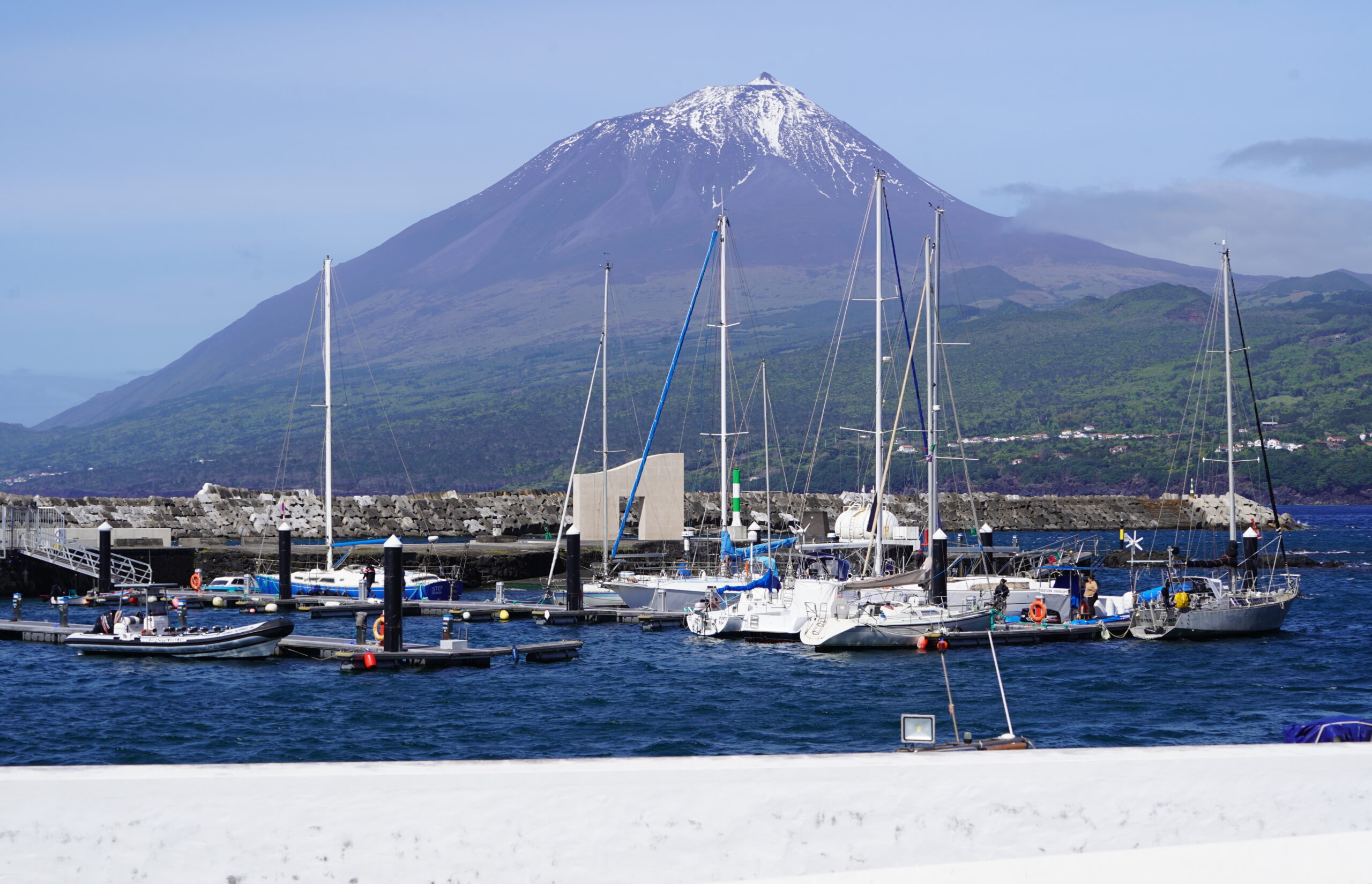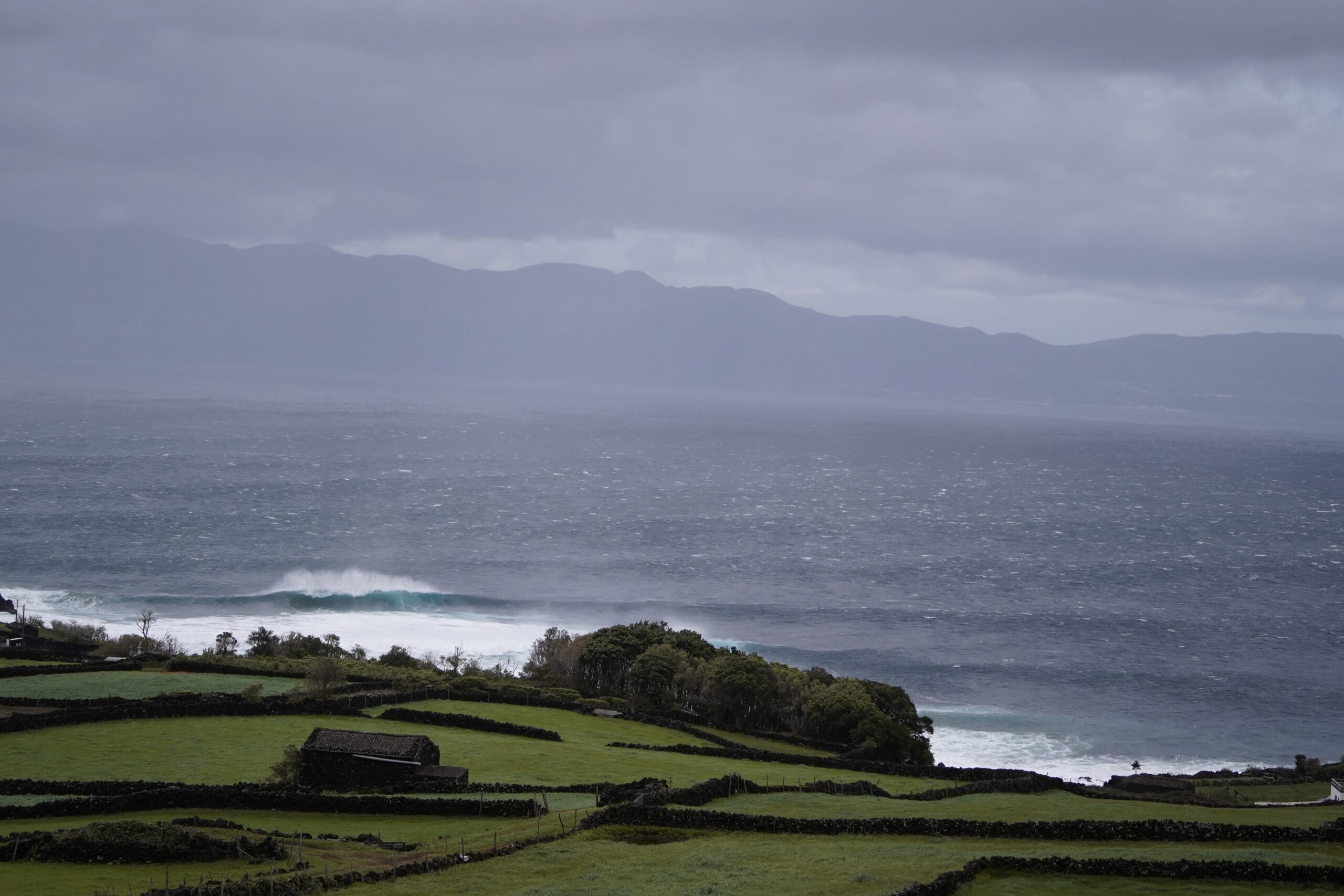SAILING BETWEEN ISLAND OF THE CENTRAL GROUP – 1 WEEK
 Illustration © Sea-Water Amplification (SWA) Azores 2025
Illustration © Sea-Water Amplification (SWA) Azores 2025
VOYAGING BETWEEN ISLAND OF THE CENTRAL GROUP:
- Pico, Faial, São Jorge, Graciosa, Terceira
EXPECTED DURATION OF THE VOYAGE
One week.
DATES
Currently unavailable
START & FINAL DESTINATION OF THE VOYAGE
Our home port is located in the town of Lajes do Pico (38° 23.80′ N, 28° 15.27′ W) on the Pico island.
 photo © Sea-Water Amplification (SWA) Azores 2025
photo © Sea-Water Amplification (SWA) Azores 2025
NUMBER OF PEOPLE ON BOARD
4
VOYAGE WITH CHILDREN
We highly recommend sailing with children. Our children spend most of their time with us on board the Risho Maru and from our own experience we can say that this is one of the key moments in a child’s life. Children love sailing. They naturally participate in the common process of planning and life on the ship. In the long term, this is one of the most natural learning processes we have had the opportunity to know so far.
PRICE
€
 Illustration © Sea-Water Amplification (SWA) Azores 2025
Illustration © Sea-Water Amplification (SWA) Azores 2025
BASIC INFORMATION
Voyage from one island group to another can sometimes be a difficult task. It all depends on the weather conditions. Voyage in the central group of islands can be difficult or very easy. This means that we can face very dynamic conditions during the sailing. The voyaging routes between the Azores island are full of adventure. From changes in wind direction and speed to dynamic changes in ocean conditions.
More challenging are the offshore passages between the central group of islands, the western and eastern group of islands and then the return to the central group. Each passage can take between 24-30 hours.
With favourable conditions the sailing is easy, but it is still an open ocean and conditions can always change very quickly. But the reward is an unforgettable life experience that can change many lives. Each island in the central group is very unique and has its own advantages.
 photo © Sea-Water Amplification (SWA) Azores Atlantic Ocean 2025
photo © Sea-Water Amplification (SWA) Azores Atlantic Ocean 2025
TRAVEL STYLE
This stage is planned to be one of easiest in our Azores journey. With favourable conditions the sailing is easy, but it is still an open ocean and conditions can always change very quickly. Some passages between the islands reach a length of around 10. hours.
On a scale of 1 to 5, this voyage is at step 2.
APPROXINATE STEP BY STEP ROUTE
This route has an estimated length of approximately 180 nm.
- Lajes do Pico – Horta: 21 nm
- Horta – Velas: 22 nm
- Velas – Graciosa: 38 nm
- Graciosa – Terceira: 45 nm
- Terceira – Lajes do Pico: 54 nm
ROUTES HIGHLIGHT
 photo © Sea-Water Amplification (SWA) Azores 2025
photo © Sea-Water Amplification (SWA) Azores 2025
- Pico: 38º 30’N and 28º 20’W
- Pico (sharp point) obviously named after the majestic mountaintop emerging from the island, belongs to the Central Group. It has a total area of 447 km2, is 42 km long and 15.2 km wide at its most, running from the NW to the SE. It is the second largest island of the archipelago, at a distance of 4,5 miles from Faial, and 11 miles from San Jorge. The huge volcanic cone of Pico Mountain rises majestic, cutting the blue of the sky or allowing itself to be rolled in a protective blanket of clouds. To the east of this massive volcano, the island stretches in a long volcanic ridge, with lush patches of endemic flora and green pastures, where are about two hundred small basaltic scoria cones and about twenty lakes.
- Fail: 38º 36’N and 28º 30’W
- The 21 km in length and 14 km at the maximum width provide the 173.1 sq. km of the island of Faial with a pentagonal shape. Faial is the third most populous island of the Archipelago with 14,994 inhabitants (2011 data). The island is part of the Central Group and is the westernmost corner of the so-called “Triangle Islands”, which also include São Jorge and Pico, the latter just 6 km away from Faial. From the Triangle Islands, this is the one that has more volcanic sand beaches; the Porto Pim, Almoxarife and Norte Beaches invite you to enjoy sea bathing. The shape of the east coast varies considerably; sometimes it is high and other times it lies almost at sea level, given the action of gigantic tectonic forces that divide it into several blocks of large dimensions.
- São Jorge: 38º 24’N and 28º 33’W
- With a length of 54 km and a maximum width of 6.9 km, São Jorge Island features a long volcanic ridge stretching from northwest to southeast. The area of the island reaches 243.9 sq. km, and it is the home to 9.171 inhabitants (2011 data). The island of São Jorge is part of the Central Group and is one of the corners of the so-called “triangle islands” together with Faial and Pico, the latter of which is 18.5 km away. The elongated shape of São Jorge Island and the rhythmic sequence of cones that characterise its central part appear on the horizon as the wavy back of a prehistoric animal fast asleep.
- Graciosa: 39º 05’N and 28º 05’W
- The size of Graciosa, with 12.5 km in length and 7 km at its maximum width, provides the island with an elongated shape from the Northwest to Southeast. There are 4,391 habitants (2011 data) living on the island’s surface of 60.66 sq. It is the northernmost island from the five that make up the Central Group of the Azores Archipelago, with São Jorge, 37 km away, being the closest island. Classified by UNESCO as a Biosphere Reserve, the island of Graciosa is the second smallest of the archipelago and is also the one with the least imposing terrain, with several flat areas and smooth hills. Pedras Brancas (White Stones), Serra Branca (White Hills) or Barro Branco (White Clay) are localities on the island whose name is related to the presence of a volcanic rock, the trachyte, which is common on the island and which, once rotten by the passing of time, gets a whitish colour which justifies the nickname of White Island.
- Terceira: 38º 43’N and 27º 12’W
- The second most inhabited island of the Azores, with 56,437 inhabitants (2011 data), the Terceira island has 401.9 sq. Km, with 30.1 km long and 17.6 km at its maximum width. It is the eastern island of the five that form the central group and is the nearest one of São Jorge island, 37.9 km away. At its centre, there is the Guilherme Moniz Caldera, flooded by lavas with two thousand years old of the Algar do Carvão scoria cone, where it is the biggest spot of heather in the Azores.
COST
- What is included:
- Accommodation on board for the duration of the cruise, bed linen and bath towel. For personal comfort you can bring your own sleeping bag.
- Personal safety equipment (life jackets, safety lines)
- Crew: Ales (Captain) & my wife Jindriska (Cook/support) and our two boys Váva 7. and Elza 3. years.
- Half board (breakfast and one meal a day, water.
- VAT, port authority, port and all logistical fees related to the ship
- Diesel, water, electricity, cooking gas, motor boat and gas
- Internet connection is available near the coast
- What is not included:
- Expenses related to the trip to the boat and back, such as transfers, flights, visas and airport fees, hotels, car rental, etc.
- Personal insurance (highly recommended)
- Food on board (shared with the whole team, approx. 20 €/day)
- Possible extra costs (restaurants, museums, souvenirs, etc.)
- Personal equipment – suitable and durable clothes for sailing.
APPLICATION
- If you have decided to join us, please write to us via our contact form, what kind of travel you are interested in and what your time options are. We will send you more information in return. You can find the contact form here: FORM
- If you have any further questions about the cruise do not hesitate to contact us in the same way.